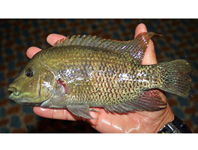Abstract
The identity of Scytalopus speluncae (Ménétriés, 1835) (Aves: Passeriformes: Rhinocryptidae), a tapaculo from southeastern Brazil, has been the matter of debate during the last eight years. A group of ornithologists considers that the nomen Scytalopus speluncae should be attributed to a species endemic to coastal mountains of southeastern Brazil, whereas another group considers it a species from the drier environments of another mountain belt in Minas Gerais, southeastern Brazil. Both research groups disagree on the identity of the still extant but damaged alleged holotype, deposited at the Zoological Institute of the Russian Academy of Sciences, St. Petersburg, on the identity of the holotype specimen illustration from a plate accompanying the species description, and even on the type locality. To further complicate this matter of identity, members of each research group, based on their own interpretations of the identity of Scytalopus speluncae, described and named again the two species with different nomina, erecting at least one unnecessary nomen. After almost ten years of a debate, there is still no consensus on the identity of the species, and there are now at least three available nomina for apparently only two distinct biological species. As taxonomists belonging to fields of zoology other than ornithology, and realizing the above situation is mainly a nomenclatural one, we herein present a summary of the contentious issue, try to distinguish what seems to be facts and speculation and based on these we consider the rules of the International Code of Zoological Nomenclature (the Code) whenever appropriate, in the hope of bringing some objectivity to the debate. We conclude that no unequivocal evidence was presented to decide to which species the type specimen belongs solely based on its morphological characters, since the holotype presents considerable damage. On the other hand, the original designation of the type locality by Ménétriés (1835) as São João del Rei, in southeastern Brazil, is unquestionable. Thus, the posterior re-designation of the type locality by a group of ornithologists was not done according to the Code. Contrary to the proposition made by a group of ornithologists that the nomen Scytalopus speluncae should be maintained to the species so called up to 2006 until further evidence confirms the identity of the holotype, we here argue that for now the nomen should be applied to the only species known to occur in the vicinities of the type locality, as established by the author of the species. Nevertheless, we also agree that obtaining molecular data from the holotype should be attempted to definitely solve the query.

